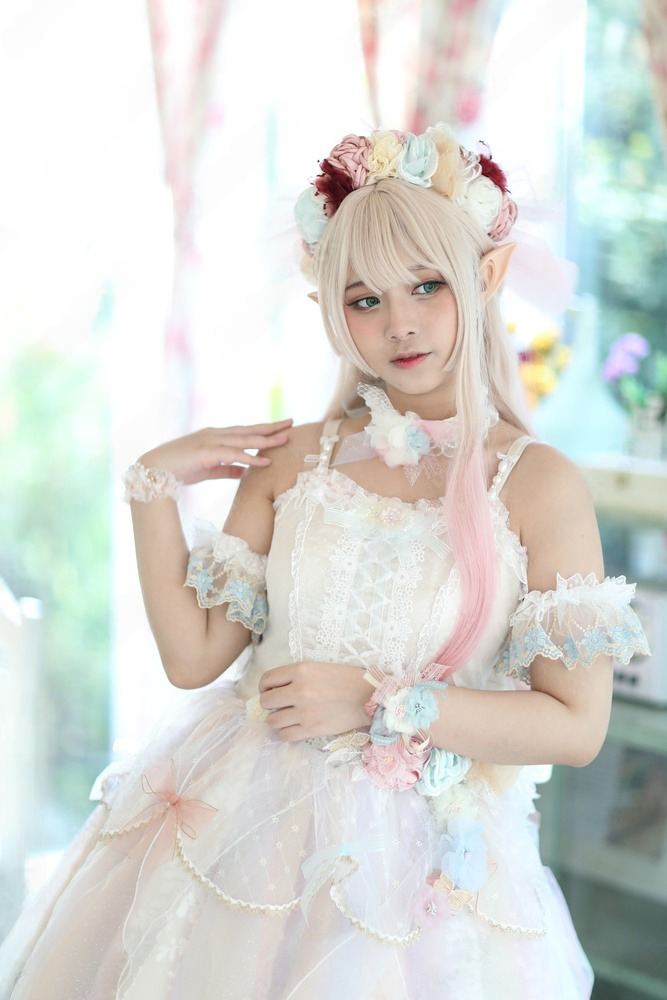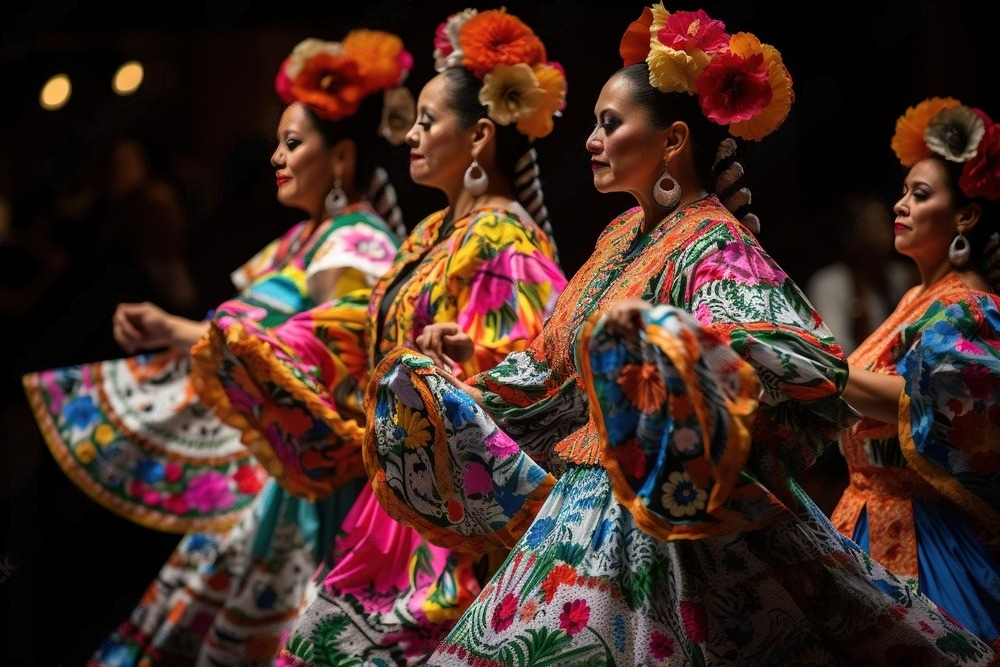In the realm of fashion, there exists a subculture that transcends trends and defies conventional norms – Lolita fashion style. Encompassing a unique blend of Victorian and Rococo influences, Lolita fashion has captured the imagination of enthusiasts worldwide. Lolita fashion, originating in Japan, is a unique and intricate style that has captured the imagination of fashion enthusiasts worldwide. In this article, we’ll delve into the captivating world of Lolita fashion, exploring its origins, key elements, popular substyles, dressing guidelines, cultural significance, challenges, and much more.
Table of Contents
Introduction to Lolita Fashion Style
What is Lolita Fashion Style?
Lolita fashion style is a subculture in Japan that emerged in the late 1970s and has since evolved into a prominent fashion movement. It draws inspiration from Victorian and Rococo clothing, characterized by its modest yet elaborate dresses, petticoats, lace, ribbons, and bonnets. With its blend of Victorian and Rococo influences, Lolita fashion embraces modesty, elegance, and a touch of whimsy. Despite its name, Lolita fashion style has no connection to the novel “Lolita” by Vladimir Nabokov; instead, it embodies innocence, femininity, and a sense of fantasy.
The Origins and History of Lolita Fashion Style
The origins and history of Lolita’s fashion style are as intriguing as the style itself. Born from a desire to defy conventions and embrace creativity, Lolita’s fashion style has evolved into a vibrant subculture with a global following.
The Birth of a Subculture
Lolita fashion style traces its roots back to Japan in the late 1970s and early 1980s. Emerging as a response to societal norms and expectations, Lolita’s fashion style served as a form of rebellion against the rigid standards of beauty and femininity. Inspired by Victorian-era clothing and characterized by its doll-like aesthetics, the Lolita fashion style quickly gained traction among Japanese youth who sought to express their individuality and creativity.
Influential Factors
Several key influences contributed to the development of Lolita fashion. One significant influence was the “Lolita Complex,” a concept derived from Vladimir Nabokov’s controversial novel, Lolita. While the novel itself explores themes of obsession and forbidden desire, the term “Lolita” became associated with youthful innocence and allure. This association, combined with Japan’s fascination with Western culture, laid the groundwork for the emergence of Lolita fashion style as a distinct subculture.
Additionally, the rise of street fashion style and subcultures in Japan provided a fertile ground for the evolution of Lolita fashion. As young people sought alternative forms of self-expression, Lolita’s fashion style offered a whimsical escape from the constraints of mainstream fashion.
Evolution Over Decades
Over the decades, Lolita’s fashion style has undergone various transformations, adapting to changing tastes and influences. In the 1990s, the movement experienced a resurgence with the establishment of dedicated fashion brands and communities. Brands like Baby, The Stars Shine Bright, and Angelic Pretty emerged as pioneers in the Lolita fashion scene, offering meticulously crafted garments that catered to different substyles within the broader Lolita aesthetic.
The early 2000s witnessed the globalization of Lolita fashion style, thanks to the internet and social media. Enthusiasts from around the world connected through online forums and platforms, sharing outfit inspiration, styling tips, and DIY tutorials. This digital interconnectedness fueled the expansion of Lolita fashion style beyond Japan, leading to thriving communities in Europe, North America, and beyond.
Substyles and Variations
Lolita’s fashion style encompasses a diverse array of substyles, each with its own distinct characteristics and motifs. From the ethereal elegance of Classic Lolita to the whimsical charm of Sweet Lolita, there is a substyle to suit every taste and personality. Gothic Lolita embraces darker aesthetics with elements of Victorian mourning attire, while Punk Lolita adds a rebellious edge to the traditional Lolita silhouette.
Contemporary Influence
In the present day, Lolita’s fashion style continues to captivate audiences worldwide, evolving with the times while retaining its core principles of modesty, elegance, and self-expression. Fashion designers and enthusiasts alike draw inspiration from Lolita aesthetics, incorporating elements of the style into mainstream fashion collections and editorials.
The influence of Lolita’s fashion style extends beyond clothing, permeating various aspects of popular culture, including music, art, and literature. From its humble beginnings in Japan to its global presence today, Lolita fashion remains a testament to the enduring power of creativity and individuality.
Different Substyles Lolita Fashion Style: Embracing Elegance and Eccentricity
Lolita’s fashion style encompasses various substyles, each with its own distinct aesthetic and characteristics. Whether you’re drawn to the elegance of Classic Lolita, the whimsy of Sweet Lolita, or the edginess of Punk Lolita, there’s a style to suit every taste and personality. By understanding the various types of Lolita fashion, you can explore different looks and express your individuality with confidence and creativity.
1. Classic Lolita
Classic Lolita is the epitome of elegance and sophistication. Characterized by muted colors, intricate lace, and refined accessories, this style exudes a timeless charm reminiscent of bygone eras. Classic Lolita enthusiasts often draw inspiration from Victorian and Rococo fashion, incorporating elements such as high-necked blouses, puffed sleeves, and A-line skirts. The key to achieving the Classic Lolita look lies in attention to detail and maintaining a sense of modesty and grace.
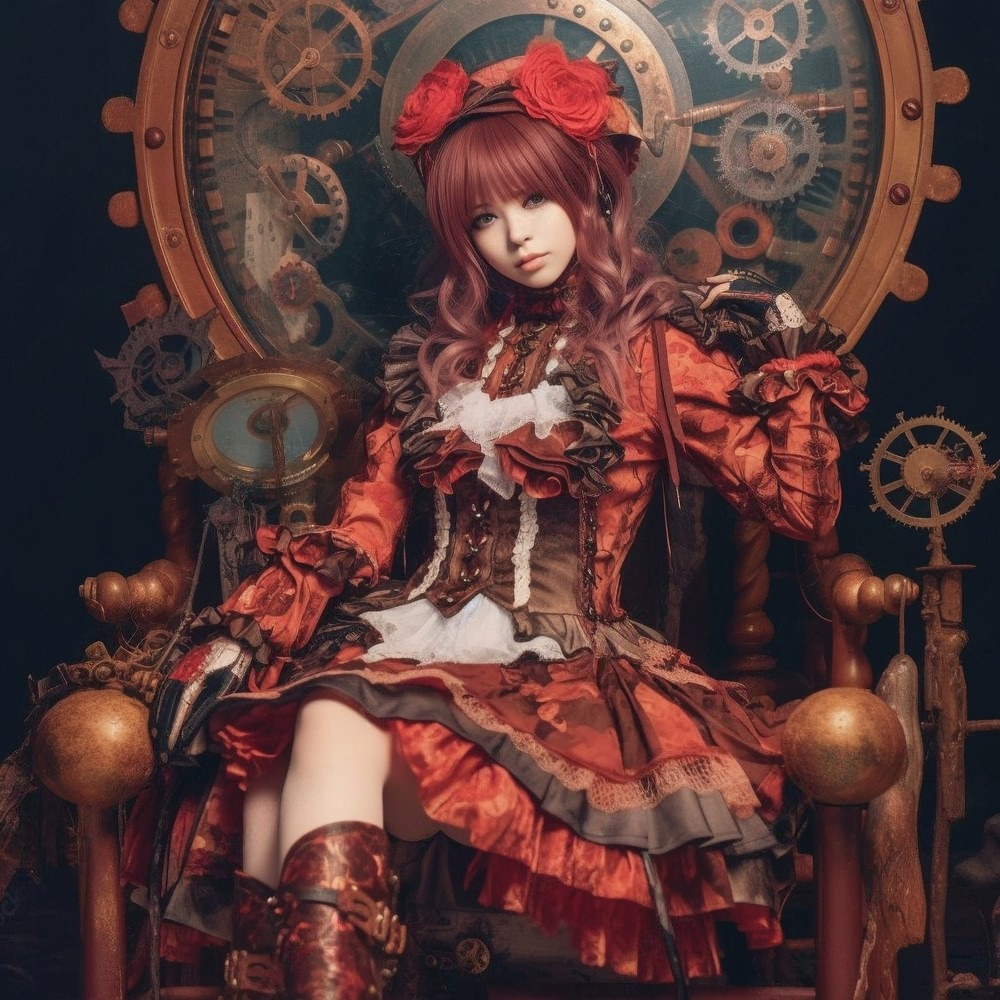
2. Sweet Lolita
Sweet Lolita is the embodiment of youthful innocence and whimsy. Pastel colors, playful prints, and cute motifs define this charming style, evoking a sense of nostalgia and childlike wonder. Sweet Lolita enthusiasts often opt for dresses adorned with bows, ribbons, and delicate embellishments, creating a fairy-tale-like aesthetic. Accessories such as bonnets, parasols, and plush toys complement the Sweet Lolita look, adding an extra touch of sweetness and femininity.
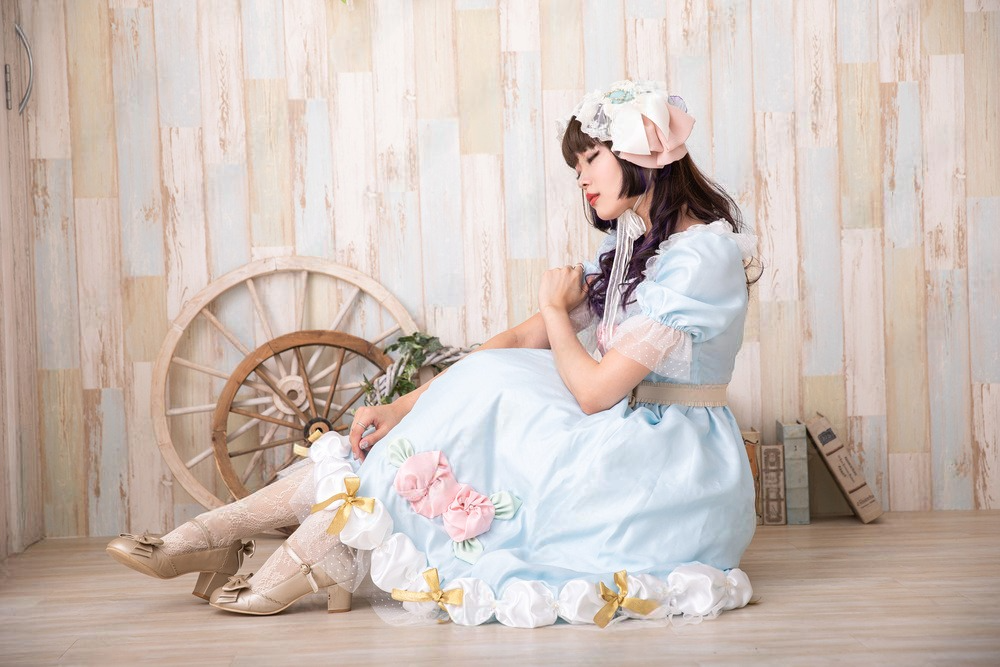
3. Gothic Lolita
Gothic Lolita offers a dark and mysterious take on the traditional Lolita fashion. With its emphasis on black, deep purples, and rich reds, this style exudes an aura of elegance and sophistication with a hint of darkness. Gothic Lolita enthusiasts often incorporate elements of Victorian and Gothic architecture into their outfits, such as lace-up corsets, ruffled collars, and ornate accessories. The overall aesthetic is reminiscent of Victorian mourning attire, with a modern twist that adds an edge of rebellion and allure.
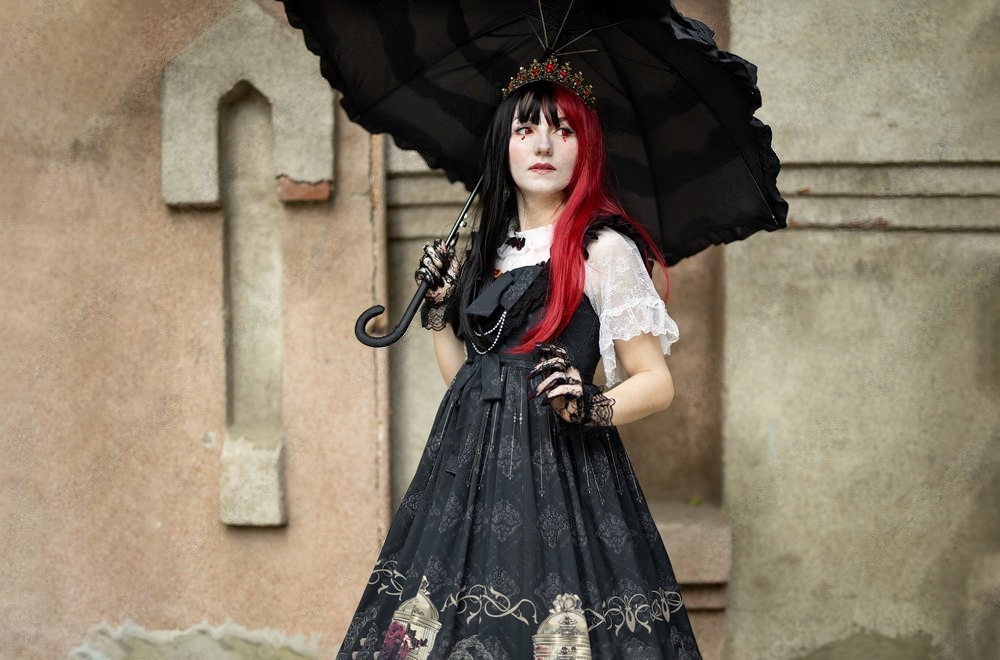
4. Punk Lolita
Punk Lolita combines the rebellious spirit of punk fashion with the whimsical charm of Lolita style. This fusion results in a bold and edgy look characterized by unconventional silhouettes, bold patterns, and eclectic accessories. Punk Lolita enthusiasts often experiment with mixing contrasting elements, such as pairing frilly dresses with leather jackets or adding spikes and studs to feminine accessories. The key to mastering Punk Lolita is embracing individuality and creativity, making bold fashion statements that defy convention.
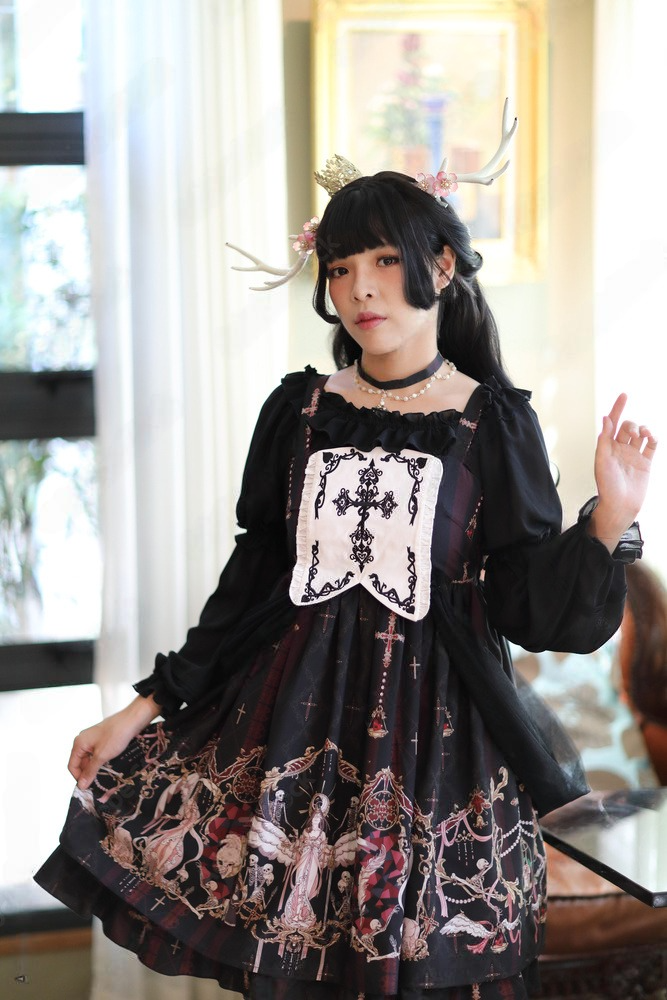
5. Wa Lolita
Wa Lolita, also known as Kimono Lolita, merges traditional Japanese aesthetics with the elegance of Lolita fashion. Inspired by the graceful silhouette of the kimono, this style features flowing fabrics, intricate patterns, and delicate embroidery. Wa Lolita enthusiasts often incorporate elements of Japanese culture into their outfits, such as obi belts, wooden sandals, and elaborate hair ornaments. The result is a harmonious blend of East and West, creating a truly unique and enchanting look.

6. Country Lolita
Country Lolita, also known as Country Cottage or Country Sweet, draws inspiration from rustic countryside living and vintage fashion. Soft earthy tones, floral prints, and rustic accessories define this charming style, evoking a sense of nostalgia and simplicity. Country Lolita enthusiasts often opt for peasant blouses, pinafore dresses, and straw hats, creating a quaint and pastoral aesthetic. Accessories such as wicker baskets, lace-up boots, and floral headbands complete the Country Lolita look, adding a touch of rustic charm to any ensemble.
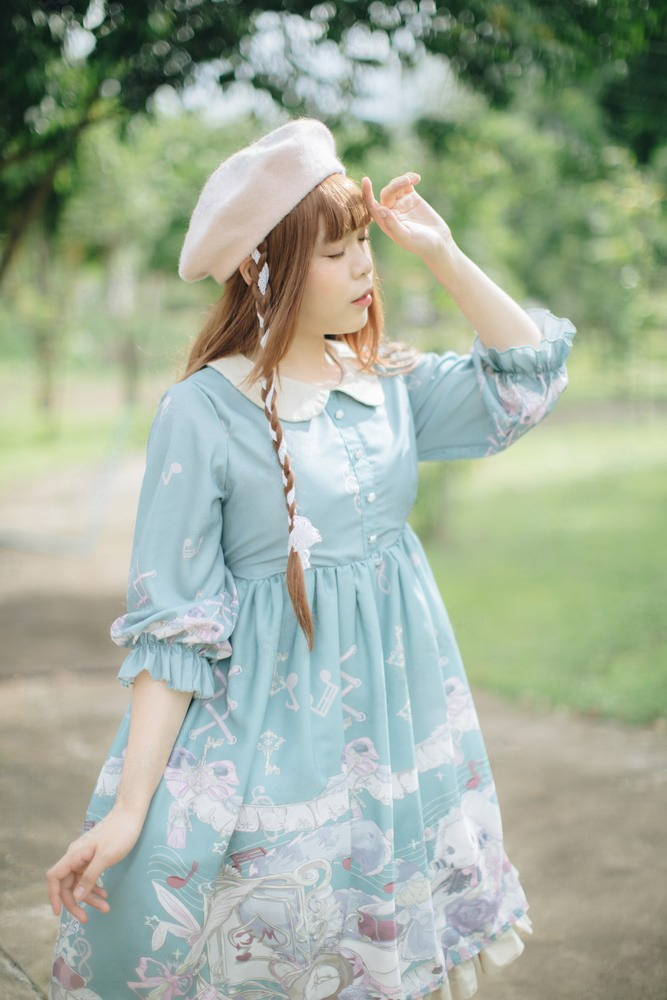
7. Hime Lolita
Hime Lolita, or Princess Lolita, embodies regal elegance and opulence fit for royalty. Luxurious fabrics, ornate embellishments, and extravagant accessories define this lavish style, evoking the grandeur of a fairy-tale princess. Hime Lolita enthusiasts often opt for dresses adorned with lace, pearls, and crystals, creating a look that is both glamorous and refined. Accessories such as tiaras, jeweled scepters, and satin gloves add an extra touch of royalty, elevating the Hime Lolita ensemble to new heights of elegance and sophistication.

8. Shiro Lolita
Shiro Lolita, or White Lolita, embraces the purity and innocence of the color white. Characterized by pristine white garments, delicate lace, and ethereal accessories, this style exudes an angelic and ethereal aura. Shiro Lolita enthusiasts often opt for dresses with intricate lace overlays, frothy petticoats, and delicate floral embellishments, creating a look that is both delicate and refined. Accessories such as pearl necklaces, lace gloves, and feathered headdresses complement the Shiro Lolita aesthetic, adding an extra layer of elegance and grace.
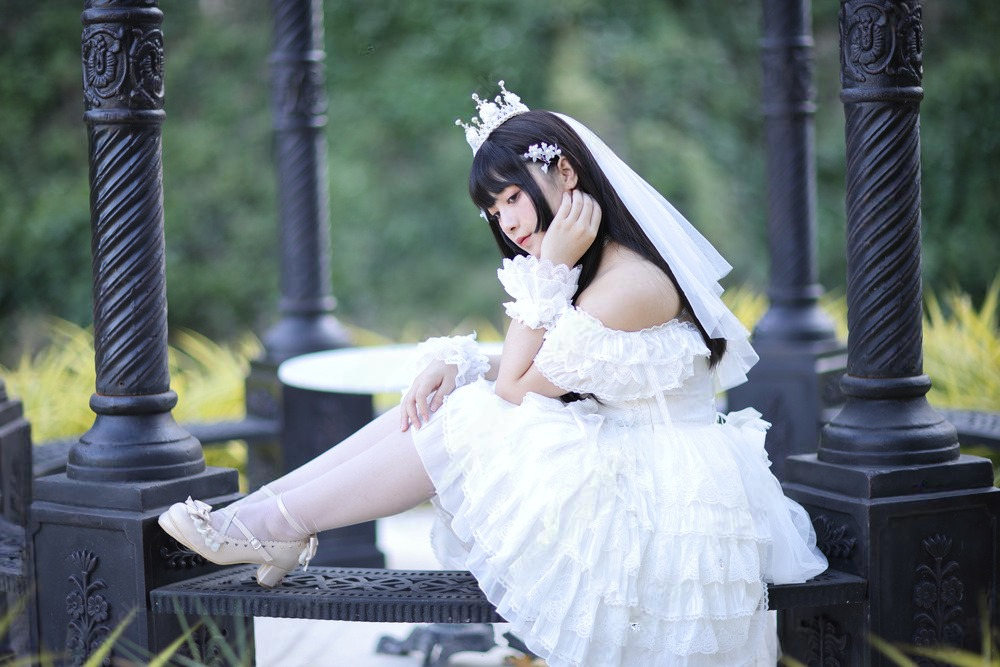
9. Kuro Lolita
Kuro Lolita, or Black Lolita, embraces the dark and dramatic allure of the color black. Characterized by black garments, lace, and accessories, this style exudes an air of mystery and sophistication. Kuro Lolita enthusiasts often opt for dresses with lace detailing, corset lacing, and elegant ruffles, creating a look that is both striking and elegant. Accessories such as chokers, lace gloves, and ornate headpieces complete the Kuro Lolita ensemble, adding a touch of Gothic glamour to any outfit.
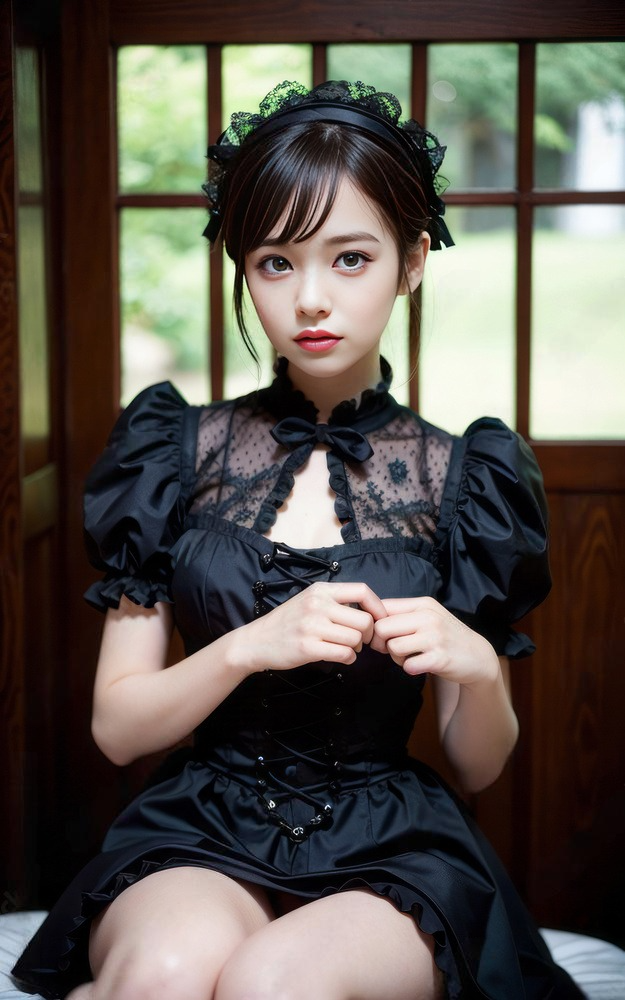
10. Qi Lolita
Qi Lolita, also known as Elegant Gothic Lolita, combines elements of traditional Chinese fashion with the dark elegance of Gothic Lolita. This fusion results in a unique and exotic aesthetic characterized by rich fabrics, intricate embroidery, and ornate accessories. Qi Lolita enthusiasts often opt for dresses with mandarin collars, floral embroidery, and delicate silk fabrics, creating a look that is both sophisticated and alluring. Accessories such as tasseled hairpins, embroidered fans, and silk brocade handbags complete the Qi Lolita ensemble, adding an extra touch of elegance and refinement.

Key Elements of Lolita Fashion Style: A Deep Dive into this Subculture
Whether you’re a seasoned Lolita enthusiast or just starting to explore this fascinating fashion trend, understanding the key elements is essential for creating authentic and stylish outfits.

1. Silhouette
The silhouette of a Lolita outfit is one of its most defining features. Typically, Lolita fashion emphasizes a modest and feminine silhouette, with dresses and skirts that are fitted at the waist and flare out into a bell shape. This silhouette, often achieved with the help of petticoats or crinolines, creates a doll-like appearance that is characteristic of Lolita’s fashion style.
2. Fabric and Texture
The choice of fabric and texture plays a crucial role in defining the aesthetic of a Lolita outfit. Common fabrics used in Lolita fashion include cotton, satin, lace, and chiffon, each lending its own unique texture and drape to the garments. Lace, in particular, is a staple element of Lolita fashion, adding a touch of delicacy and femininity to dresses, blouses, and accessories.
3. Color Palette
Lolita’s fashion style embraces a wide range of colors, from soft pastels to bold and vibrant hues. However, certain color palettes are more commonly associated with specific substyles. For example, Sweet Lolita often features pastel shades such as pink, lavender, and baby blue, while Gothic Lolita tends to favor darker colors like black, burgundy, and navy blue. Classic Lolita, on the other hand, leans towards more muted tones such as ivory, beige, and dusty rose.
4. Prints and Motifs
Prints and motifs are another key aspect of Lolita fashion, adding visual interest and personality to outfits. Common motifs found in the Lolita fashion style include bows, ribbons, flowers, animals, and geometric patterns. These motifs are often incorporated into the fabric through techniques such as embroidery, printing, or appliqué, enhancing the overall aesthetic of the outfit.
5. Accessories
Accessories play a crucial role in completing a Lolita ensemble and adding a personal touch to the overall look. From elaborate headpieces and hair accessories to delicate jewelry and handbags, the right accessories can elevate a simple outfit to new heights of elegance and sophistication. Some popular Lolita accessories include bows, ribbons, lace gloves, parasols, bonnets, and headdresses.
6. Hairstyles and Makeup
Hairstyles and makeup are integral parts of Lolita fashion, helping to enhance the overall aesthetic and create a cohesive look. Common hairstyles in Lolita fashion include curly or wavy hair, often styled into elaborate updos or adorned with bows and ribbons. Makeup tends to be soft and feminine, with emphasis placed on achieving a youthful and doll-like appearance through techniques such as rosy cheeks, doe-eyed lashes, and soft lip colors.
7. Footwear
Footwear is an essential component of Lolita fashion, with a variety of styles available to complement different outfits and substyles. Some popular Lolita footwear options include Mary Jane shoes, ballet flats, ankle boots, and platform heels. The choice of footwear can significantly impact the overall look and feel of a Lolita outfit, so it’s essential to choose shoes that not only match the aesthetic but also provide comfort and support.
8. Headwear
Accessories play a significant role in completing a Lolita ensemble, with headwear being particularly important. Headbands, bows, bonnets, and mini-top hats are popular choices for adding an extra dose of whimsy to an outfit. Floral motifs, lace trimmings, and satin ribbons are common embellishments found on Lolita headwear.
9. Pinafores and Jumperskirts
Pinafores and jumper skirts are versatile pieces commonly found in Lolita wardrobes. These garments feature a sleeveless bodice with a full skirt, often adorned with bows, ribbons, or decorative buttons. Pinafores can be layered over blouses or worn on their own for a charming and youthful look.
Embracing Tradition Around the World
Japanese Influence on Lolita Fashion
Lolita’s fashion style, with its elaborate dresses, doll-like aesthetics, and whimsical accessories, has captured the fascination of fashion enthusiasts worldwide. But what many may not realize is the profound influence of Japanese culture woven intricately into this unique style.
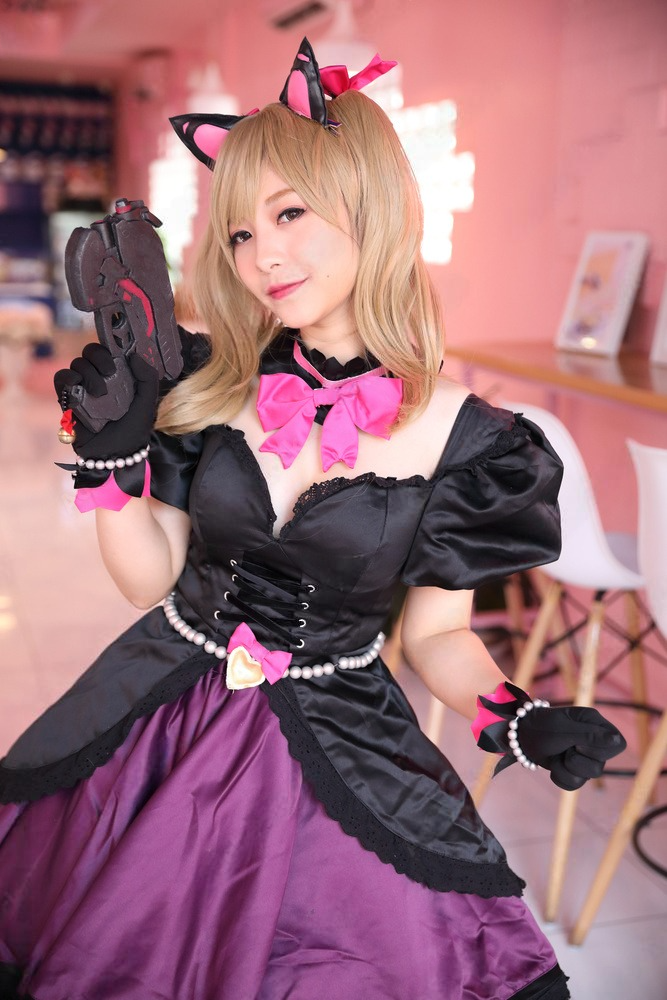
1. Kawaii Culture:
Central to Lolita fashion is the concept of “kawaii,” meaning “cute” or “adorable” in Japanese. This cultural phenomenon celebrates youthful innocence and aesthetic charm, evident in the whimsical designs and pastel hues prevalent in Lolita attire.
2. Harajuku Street Fashion:
Harajuku, a bustling district in Tokyo renowned for its avant-garde fashion scene, serves as a breeding ground for Lolita fashion trends. The vibrant street culture of Harajuku embraces experimentation and self-expression, providing a fertile environment for the evolution of Lolita fashion.
3. Traditional Japanese Apparel:
Elements of traditional Japanese clothing, such as the kimono and yukata, influence the silhouette and layering techniques observed in Lolita fashion. The graceful draping and meticulous attention to detail pay homage to Japan’s rich sartorial heritage.
Fusion of East and West: Cultural Cross-Pollination
4. Global Popularity:
While rooted in Japanese culture, Lolita fashion has transcended geographical boundaries to captivate enthusiasts worldwide. Its fusion of Eastern and Western aesthetics resonates with individuals seeking alternative fashion expressions beyond cultural confines.
5. Anime and Manga Influence:
The widespread popularity of Japanese anime and manga has significantly contributed to the global dissemination of Lolita fashion style. Iconic characters adorned in Lolita-inspired attire serve as style inspirations for fans, further blurring the lines between fiction and reality.
Evolution and Innovation: Contemporary Trends
6. Adaptability and Creativity:
One of the hallmarks of Lolita’s fashion style is its adaptability to contemporary trends while maintaining its core aesthetic principles. Designers and enthusiasts continually reinterpret traditional motifs, incorporating modern elements to keep the style dynamic and relevant.
7. Social Media Revolution:
The advent of social media platforms has catalyzed the proliferation of Lolita fashion communities, fostering collaboration, inspiration, and trend dissemination on a global scale. Instagram, Pinterest, and dedicated online forums serve as virtual hubs for enthusiasts to showcase their creativity and connect with like-minded individuals.
In conclusion, the allure of Lolita fashion style transcends mere sartorial expression, embodying a tapestry of cultural resonance woven from Japanese heritage and global influences. Its evolution reflects a delicate balance between tradition and innovation, continually redefining the boundaries of fashion subculture. As enthusiasts continue to draw inspiration from Japan’s rich cultural tapestry, the legacy of Lolita fashion remains an enduring testament to the transformative power of creativity and cross-cultural dialogue.

